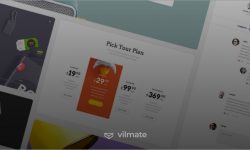Even today’s big players in the market have started small. Spotify, for example, has developed its product following the same process as most start-ups do, and thus starting with an MVPю
An MVP (minimum viable product) is exactly about that. Let's see how so.
Let me begin with an example. Spotify is a digital music streaming service that offers a lot of functionality to users – you can create multiple playlists, share your favorite songs with friends, receive individual selections of songs based on your music taste, etc. However, Spotify started as a small start-up with only one function: it allowed you to listen to music without downloading it to your device. This feature was Spotify’s MVP.
Accordingly, an MVP is a sample product, a test version with a minimum set of functions. It might be a raw and simple demonstration meant to test the hypothesis, but it is still a product!
All MVPs share two important characteristics:
- They solve a specific problem or address a particular pain point of the target audience.
- The audience is willing to pay for it (either with their money or action.)
The first point must be clear, but what about the second one? Let me explain.
The answer is simple: people will not always buy a product that solves their problem. An early selfie stick was invented in 1983, and in 1995, it was featured in the book about “unuseless inventions." It solved the client's problem then, and it still does now, allowing users to take pictures of themselves from a distance. The problem with the selfie stick is that in the eighties, the corresponding "pain point" did not seriously bother anyone. It became evident decades later, in the 21st century, with smartphones becoming more affordable and smartphone cameras getting better every year.
Well, an MVP is created to test your hypothesis. It helps you understand if customers need your product on the market at all, and whether it can help them.
Let's use an example of our client. He decided to launch an application. First off, I asked him: "Why do you need an application?"
He replied, “To store video lectures in this app so that users could watch them without internet access.” Then, I immediately suggested making a pilot product to test market demand first.
Before making an MVP, we asked ourselves the following questions:
What kind of client are we going to develop an MVP for?
How should it work, and is it really necessary for it to work without an internet connection?
What can I offer to this company, both useful and saving their time, money, and effort (in case the hypothesis does not work)?
Of course, there may be more questions, depending on your area. These were the most universal ones.
What we did:
offered the client to make a pilot product;
found one developer, perfectly qualified for the project;
completed the project and received early feedback.
Only then, having realized that the application was actually in-demand, we finalized the idea and started full-scale development.
You shouldn’t make a perfect product right away, no matter how brilliant and innovative the idea may seem to you. There is always a chance that it won’t work out. And you will still spend a lot of money, time, and effort on its implementation – in fact, this is one of the reasons why 9 out of 10 start-ups fail.
You’d better launch an MVP, a minimum viable product, that will help your target the right audience right away and address their specific pain points. Collect customer feedback, assess development prospects, and decide whether to turn your MVP into a “perfect product” or continue looking for a better idea instead!
If you need help with MVP development, leave a request and we will contact you.




